A complete guide with everything you need to know about traveling to Bhutan. Includes information on the cost of travel, Bhutanese culture, language, and everything else you need to know before you travel to Bhutan.
Closed to the rest of the world until recent years, Bhutan is an idyllic mountain kingdom deep in the Himalayas. These days, times are a-changin’ and tourists are now welcome in the isolated but culturally rich little land. Lonely Planet called it the number one destination to visit in 2020—I don’t disagree—and I’m sure many people will visit despite the relatively high cost of visiting Bhutan.
The country makes great efforts to preserve their culture in the face of globalization; tourists should be sensitive and respectful. Though most tourists are required to visit with a guide or tour, there are still things you need to know if you want to travel to Bhutan! Read on—I’ll give you the rundown on everything you need to know before you travel to Bhutan.
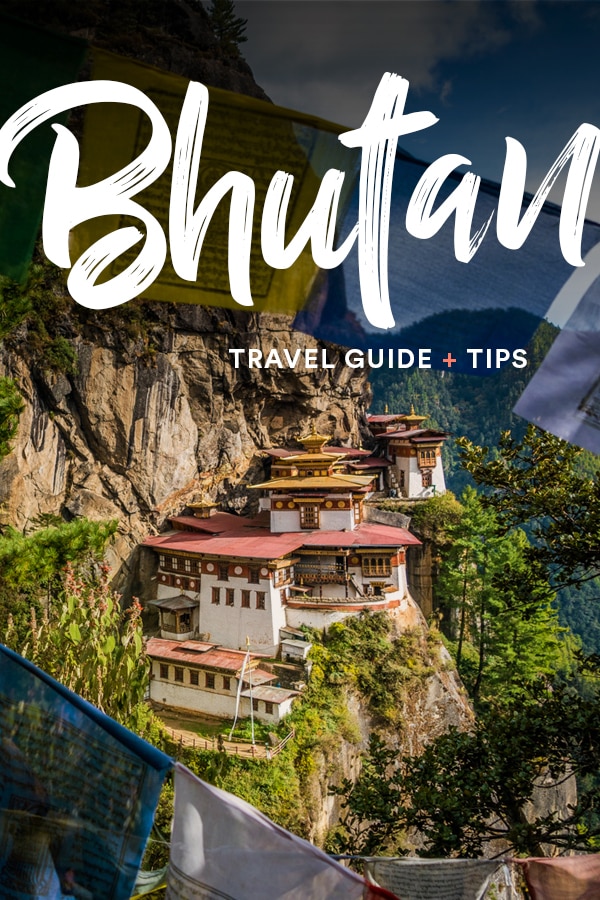
Pin it!
Index
- Bhutan basics
- Language
- Visas
- Culture
- What to wear
- Interacting with locals
- Happiness
- Religion
- Bhutanese food
- Vegetarian and vegan travel
- Best time to visit
- Money and cost
- Transportation
- Safety
- Connectivity and SIM cards
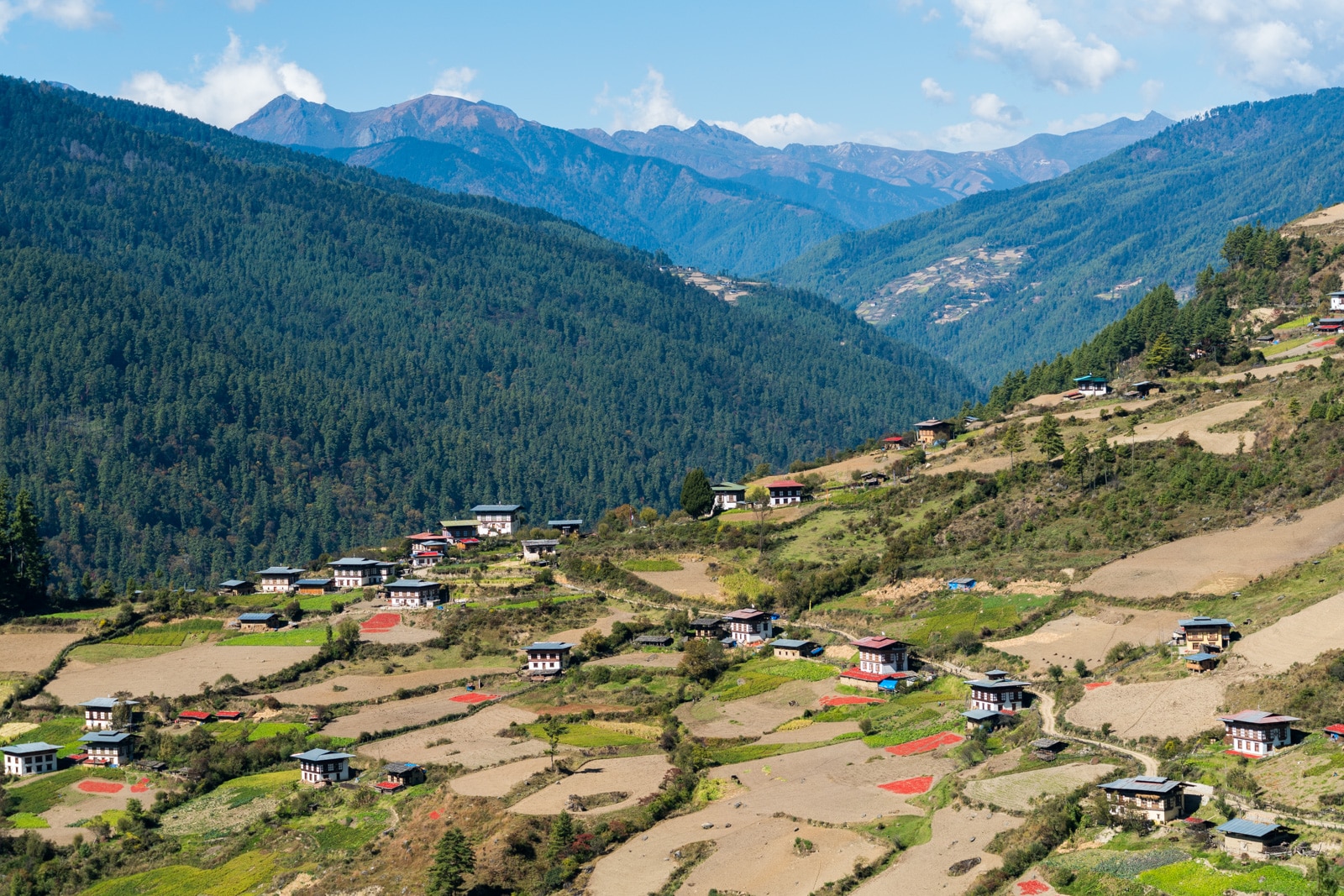
Typical Bhutanese village scenes (plus chilies!) on the way to Haa Valley
Bhutan basics
The Kingdom of Bhutan is caught between leviathans China and India, in the Eastern Himalayas. The country has a population of roughly 750,000 people. Thimphu, the capital, sits in the west of the country.
Never colonized, and isolated due to its geography, Bhutan developed a strong national identity and culture. It’s also the most peaceful and least corrupt country in South Asia, and ranks first in ease of doing business and economic freedom in the region. It’s an outlier in every way!
In 2008 Bhutan changed from an absolute monarchy to a constitutional monarchy. Although the King is much beloved and respected by the people, his political powers are mostly ceremonial.
Given its small population and restrictive mountainous location, the country lacks major industries and revenue streams. Agriculture is the main livelihood of most Bhutanese people, while tourism and hydropower are close behind.
Sustainable tourism
Necessity is one of the reasons tourism is so carefully managed in the country. Though tourism has immense potential to financially support the country, it has just as much power to overwhelm its small population and delicate cultural balance.
Tourism in Bhutan has been restricted through pricing for decades. “High value” tourists were the only ones able to access the kingdom via mandatory guided tours at a standard, controlled price. Revenues benefit more than those in the tourism industry; 30% of tourism money goes to a “sustainable development fee” that provides free health care, free education, infrastructure, and more for all of Bhutan’s population. I find it hard to be bitter about a system that so clearly benefits local populations!
However, these days the scales are tipping. India has extensive soft power over its small neighbour, and pressured the country to allow its citizens to visit without needing a guided tour. Given the rapidly growing popularity of travel in populous India, Bhutan is increasingly overwhelmed by Indian tourists; in 2018, more than half of foreign tourists in Bhutan were Indians.
How will this influx affect Bhutan’s previously-functional sustainable tourism structure? Only time will tell, but from July 2020 on, regional tourists will have to pay 1,200 Rs per day (around $16) to visit Bhutan.
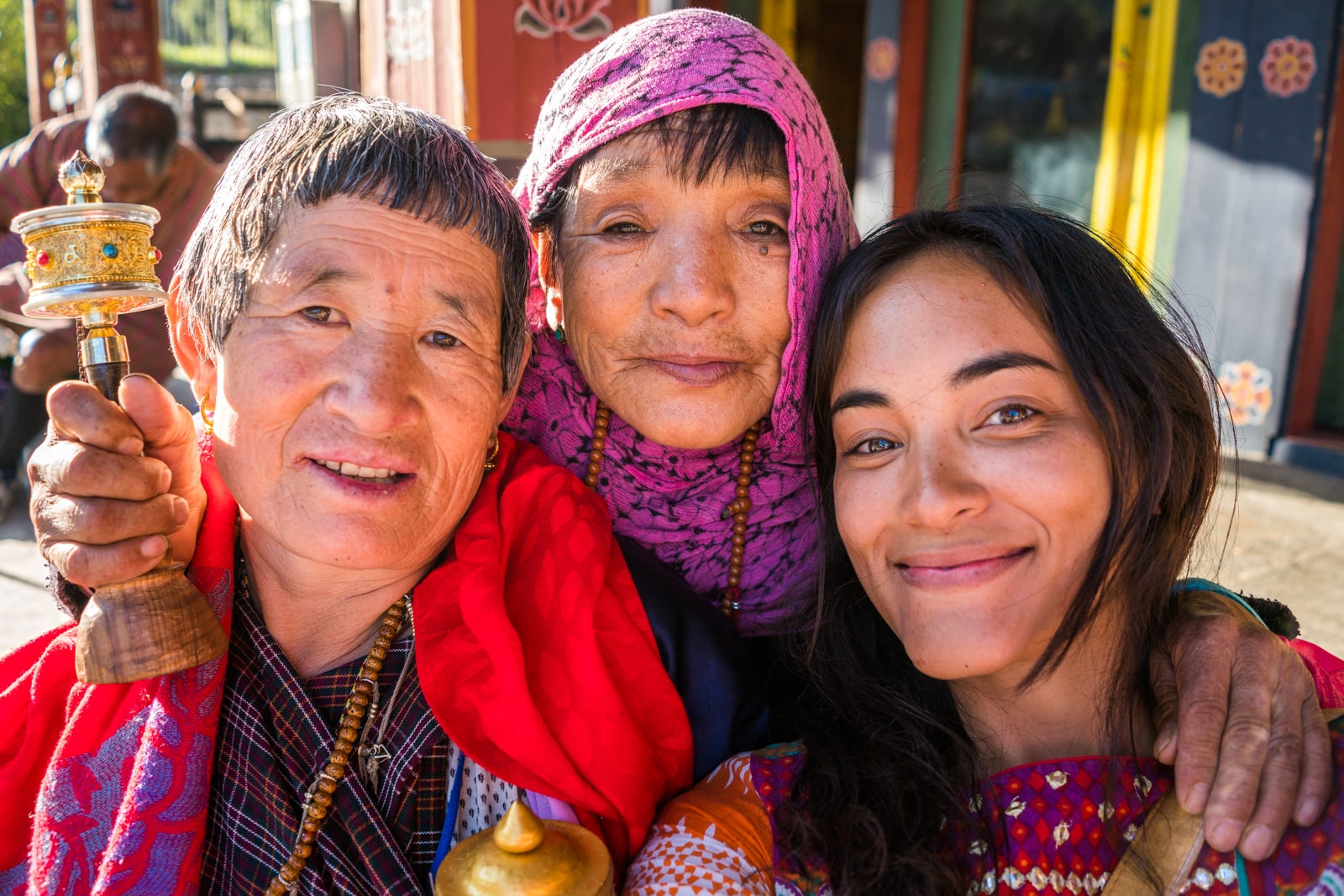
My dzongkha was too poor to speak with these local women, but sometimes you don’t need words to communicate. They were a riot!
Language
Dzongkha is the official language of Bhutan. A variety of regional languages exist, but Dzongkha is the lingua franca.
English is also widely taught in school; many young people speak English well. English skills are especially pronounced in the tourism industry, where almost everyone speaks English.
If you travel to Bhutan, you will have little trouble communicating. Even if someone doesn’t speak English, nonregional tourists will have a guide on hand to translate if desired. Regional tourists will notice than many Bhutanese people understand some Hindi due to consuming large amounts of TV and films from neighboring India.
Useful Dzongkha phrases
- Kuzu zangpo la – Hello
- Kadin chey la – Thank you
- Inn – Yes
- Menn – No
- Gaday bay zhui? – How are you?
- Legshom – I’m fine
Need some inspiration? Check out these stunning photos of Bhutan!
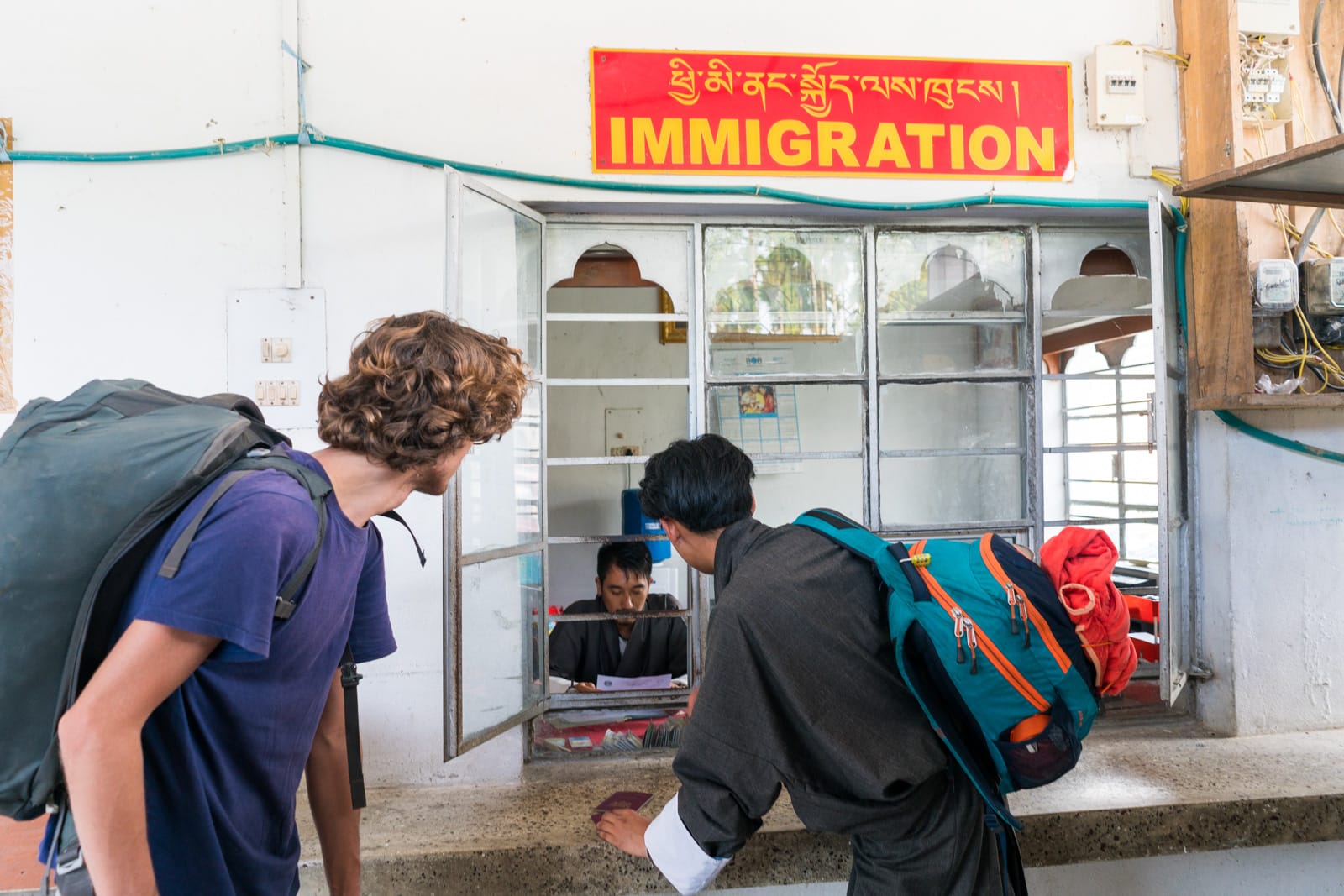
Crossing overland from India to Bhutan via the Gelephu border crossing
Visas
Most nationalities need visas to visit Bhutan. Since most also need to be on a guided tour, your tour agency should take care of the visa as part of the tour fee. No need to spend too much mental energy on that!
Tourists from India, Bangladesh, and the Maldives currently do not need visas to visit Bhutan. However, permits are required when crossing into the country by land.
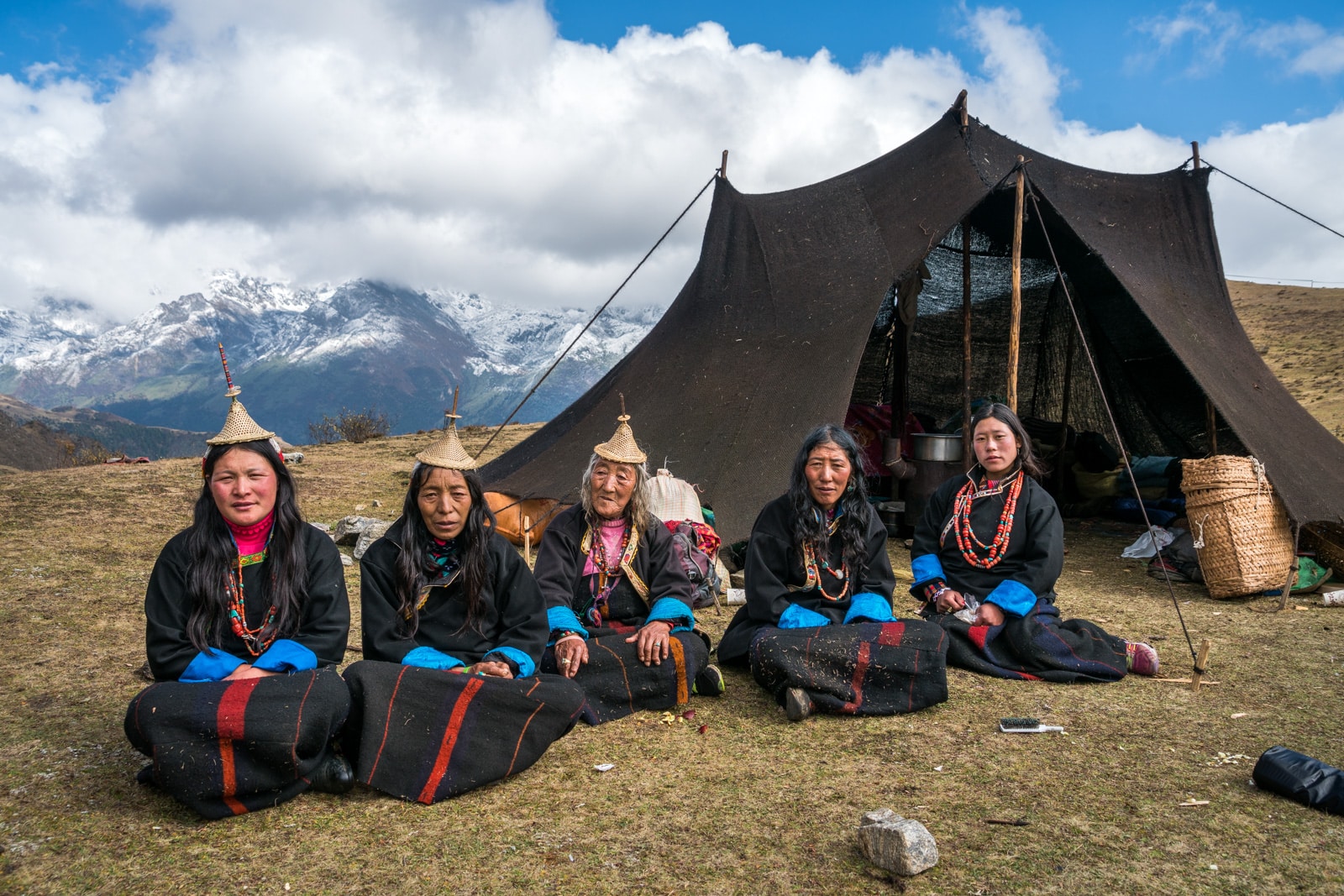
Local Layap women chillin’ in front of their yak hair tent at the Royal Highlander Festival in Laya
Culture
Bhutan’s cultural heritage is rich and carefully guarded. The country is unique in how it protects and fosters its cultural heritage, rather than abandoning its history to globalizing tides. This is the primary reason many tourists have their eyes on Bhutan… and the country knows it.
Bhutanese culture is strongly influenced by Buddhism. Many cultural festivals take place each year all across the country, showcasing the diversity of its heritage. Unlike other countries, many of these festivals aren’t typical tourist traps, but rather experiences catering to locals showcasing authentic traditions in their regions. Some in more popular areas like Thimphu and Paro might skew touristic; the further off the beaten track you travel in Bhutan, the more local these festivals are guaranteed to be.
Read: Livin’ it up in Laya at the Royal Highlander Festival

Traditional clothes and what to wear
Clothes are an integral part of Bhutanese culture. Men typically wear a robe called gho. Women wear a shirt and wrap combination, kira.
These traditional clothes are no longer mandatory for Bhutanese people—unless they’re on official business—but you’ll see many people wearing them, even in the capital. Bhutan Street Fashion is a great Instagram-insight into clothes and culture in modern-day Bhutan, run by a friend of mine named Karma Wangchuck.
Foreign tourists aren’t expected to wear local clothes… but that doesn’t mean you can wear anything and everything! Although the country is much less conservative than some of its regional neighbors, tank tops and short skirts are definitely not a common sight in the country (unless you go clubbing in Thimphu, that is).
Dzong fortresses and monasteries are the only place with official dress codes. Visitors to dzongs must wear long pants, long-sleeve shirts, and closed shoes to enter. Local men have to be in gho. Hats are not allowed for locals or foreigners. Shoes and hats are also forbidden inside monasteries.
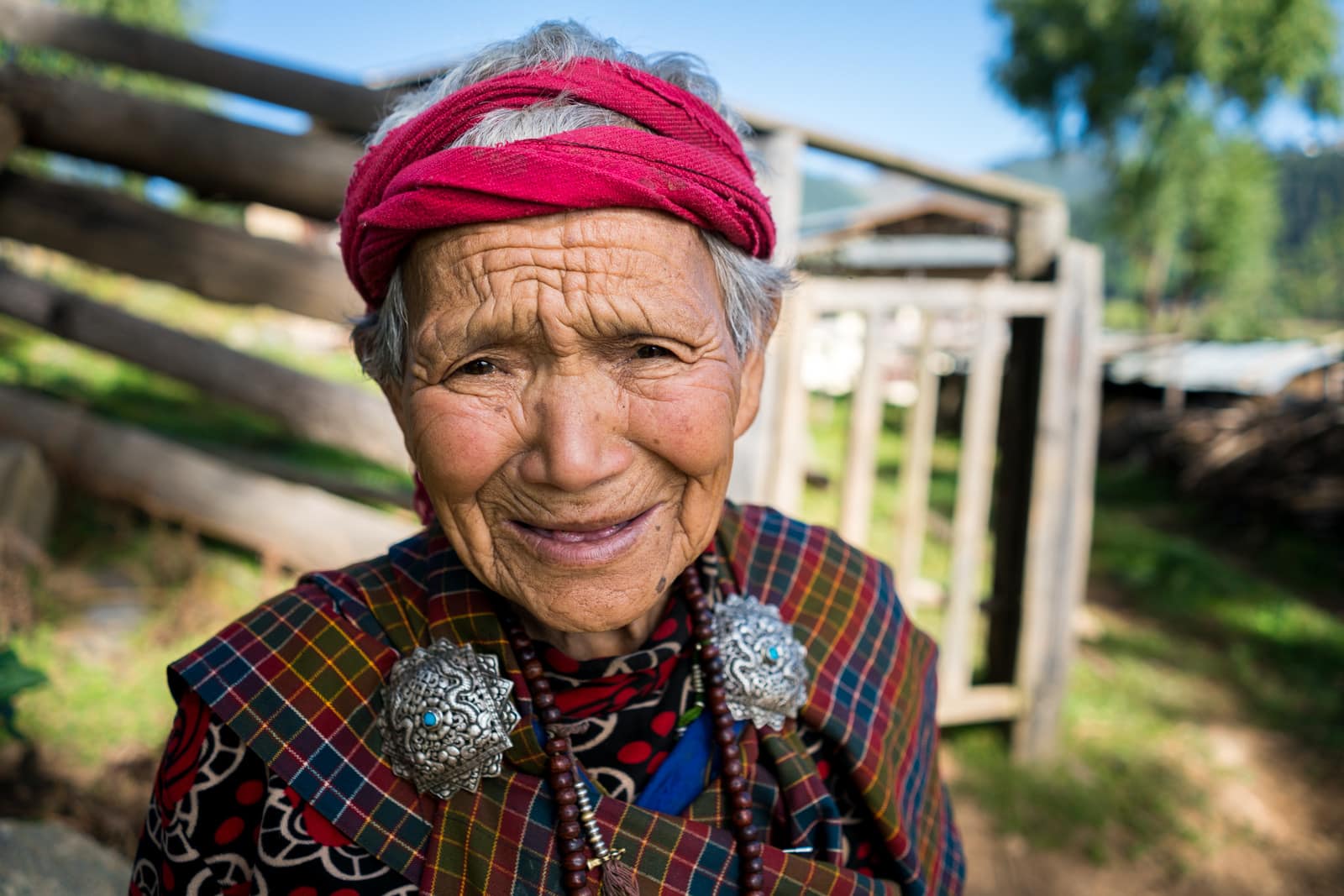
Interacting with locals
Bhutanese people are very friendly, if initially shy; the more off the beaten track you go, the more people will want to have a chat with you! Again, language isn’t such an issue since most tourists will be with a guide who can translate.
To avoid offending anyone, make sure to only use your right hand when shaking hands, eating with hands, or giving/accepting gifts—sorry lefties—and don’t touch anyone on their head.
Happiness
People who have heard of Bhutan often think of its Gross National Happiness index. Many people associate this with the idea that the country is an incredibly happy one, or that the government somehow forces people to be happy.
This is a misconception. Surveys suggest that Bhutanese people aren’t significantly happier than other people.
The GNH index means decisions made by the government have to be for the good of the majority of people, and have to take into account the general wellbeing and the overall quality of life of Bhutan’s citizens. Still an enlightened policy, but not quite as rainbow and sunshine as simplified news makes it out to be.
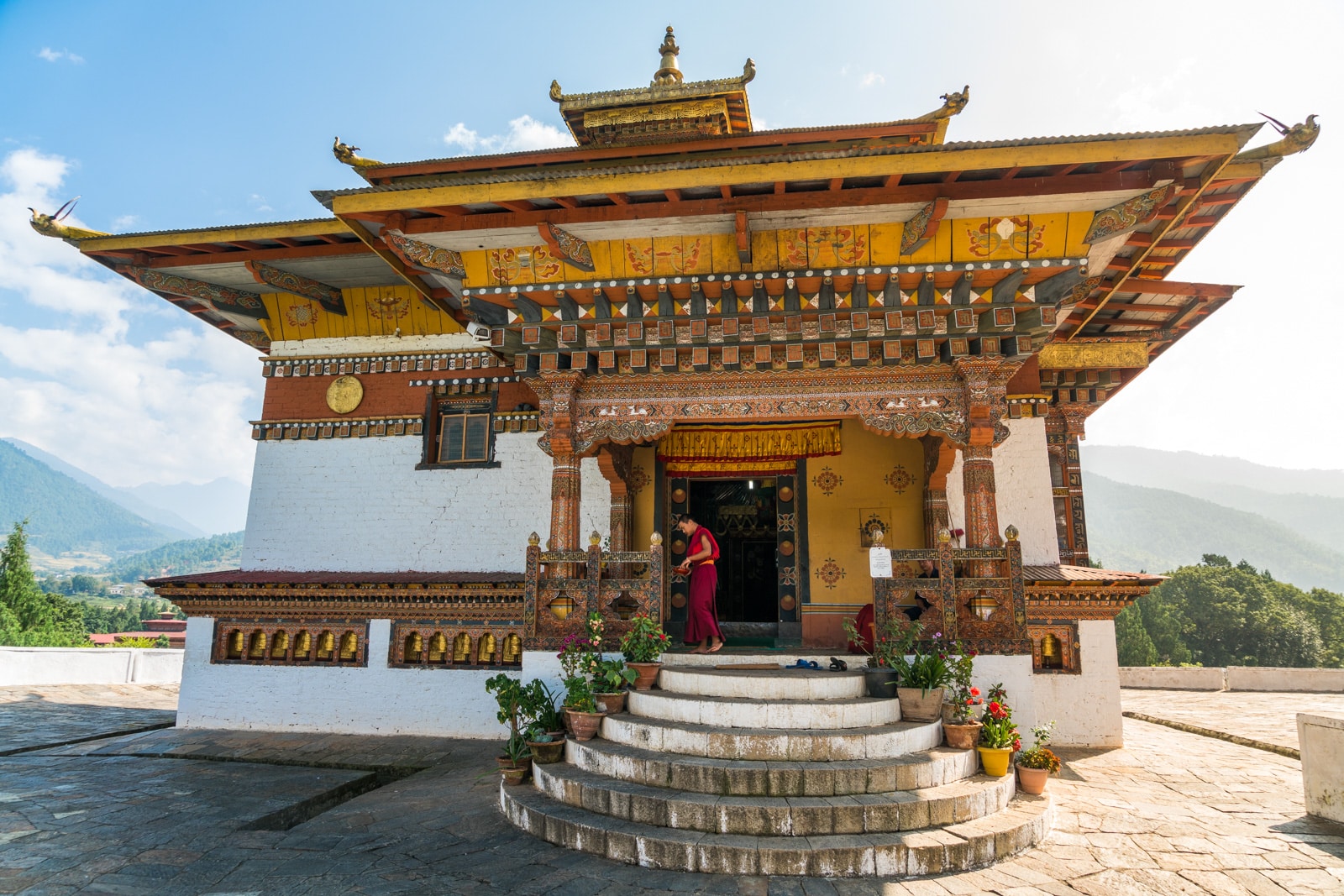
A small monastery inside Punakha’s dzong
Religion
The majority of Bhutanese people follow Vajrayana Buddhism, which is also the state religion. Bhutan has a Hindu minority, most notably in the southern regions bordering India.
The country guarantees freedom of religion, but proselytizing is forbidden. People travelers encounter are generally open to people of other religions, and don’t mind if you’re nonreligious.
However, when visiting, make sure to show respect for its religious traditions and buildings. Never wear shoes inside a religious building. Behave appropriately when visiting temples and monasteries. Always walk clockwise around stupas. Never point with your finger at images; use an open palm facing slightly upwards. Don’t climb stupas for selfies (looking at you, Indian biker bros).
Rules when visiting religious places
There are a few rules to adhere to when visiting religious places:
- No shoes or headwear inside, including sunglasses
- Don’t take photos inside unless you’re officially allowed
- Walk clockwise around stupas, always an odd number of times
- Use an open hand with the palm up when you want to point to anything
- Don’t make loud noises
- Don’t climb stupas, statues, or anything remotely religious for selfies
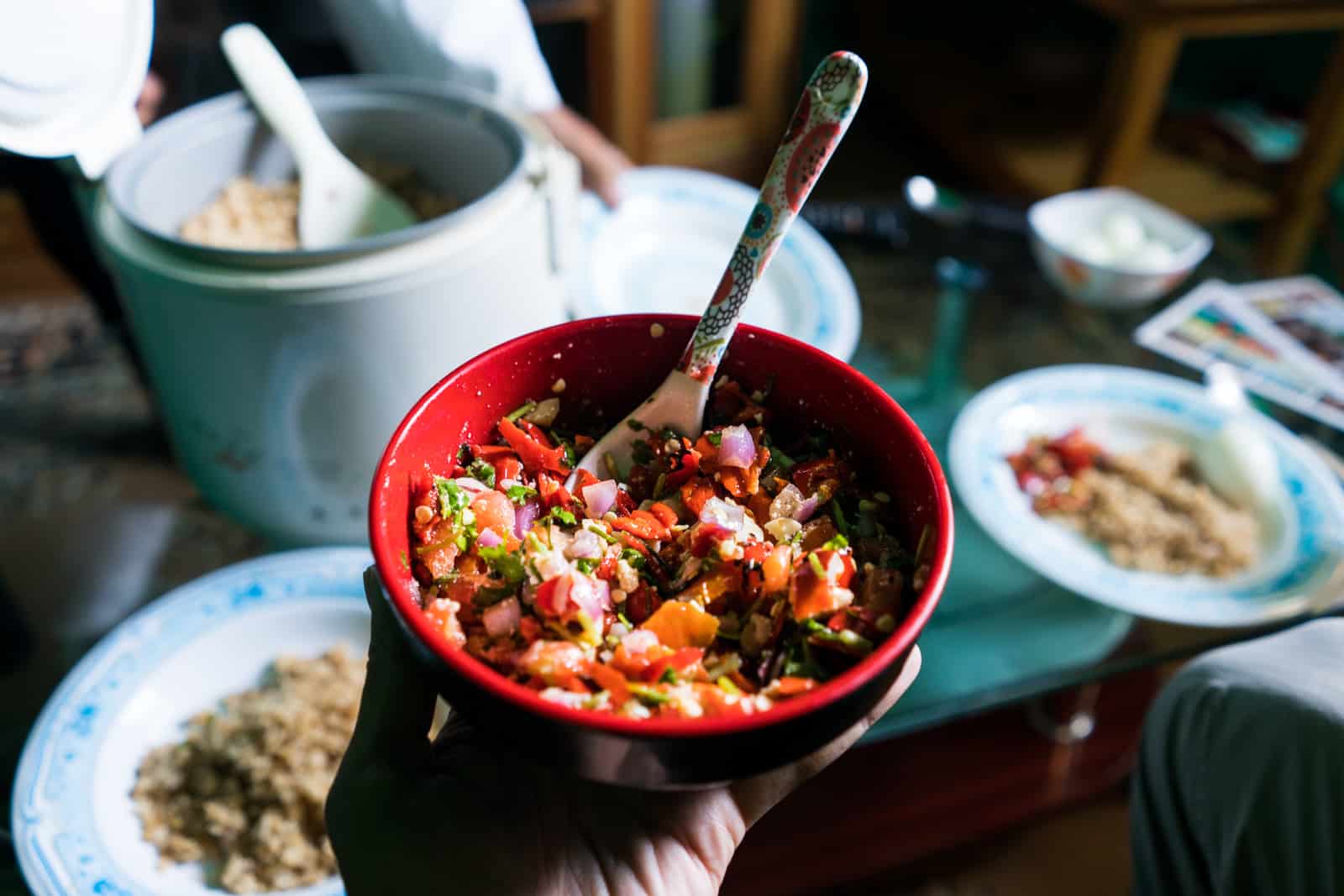
Bhutanese ezay, chili chutney, at someone’s home in Kuengarabten
Food
Bhutanese food is spicy. Proof: Bhutan’s national dish is ema datshi, chilis and cheese. It’s delicious and I urge you to try it at least once…but make sure to go for the real version, not watered down tourist cheese.
If you don’t like spicy food, never fear. Tourist restaurants adjust the spice level of their dishes for the average (Western) foreign palate.
If, like me, you do want the spicy stuff, you’re in luck. Bhutanese people cook and eat chilies like any other vegetable. Ask your guide for recommendations for local restaurants, and don’t be afraid to tell homestay hosts to bring on the chilies!
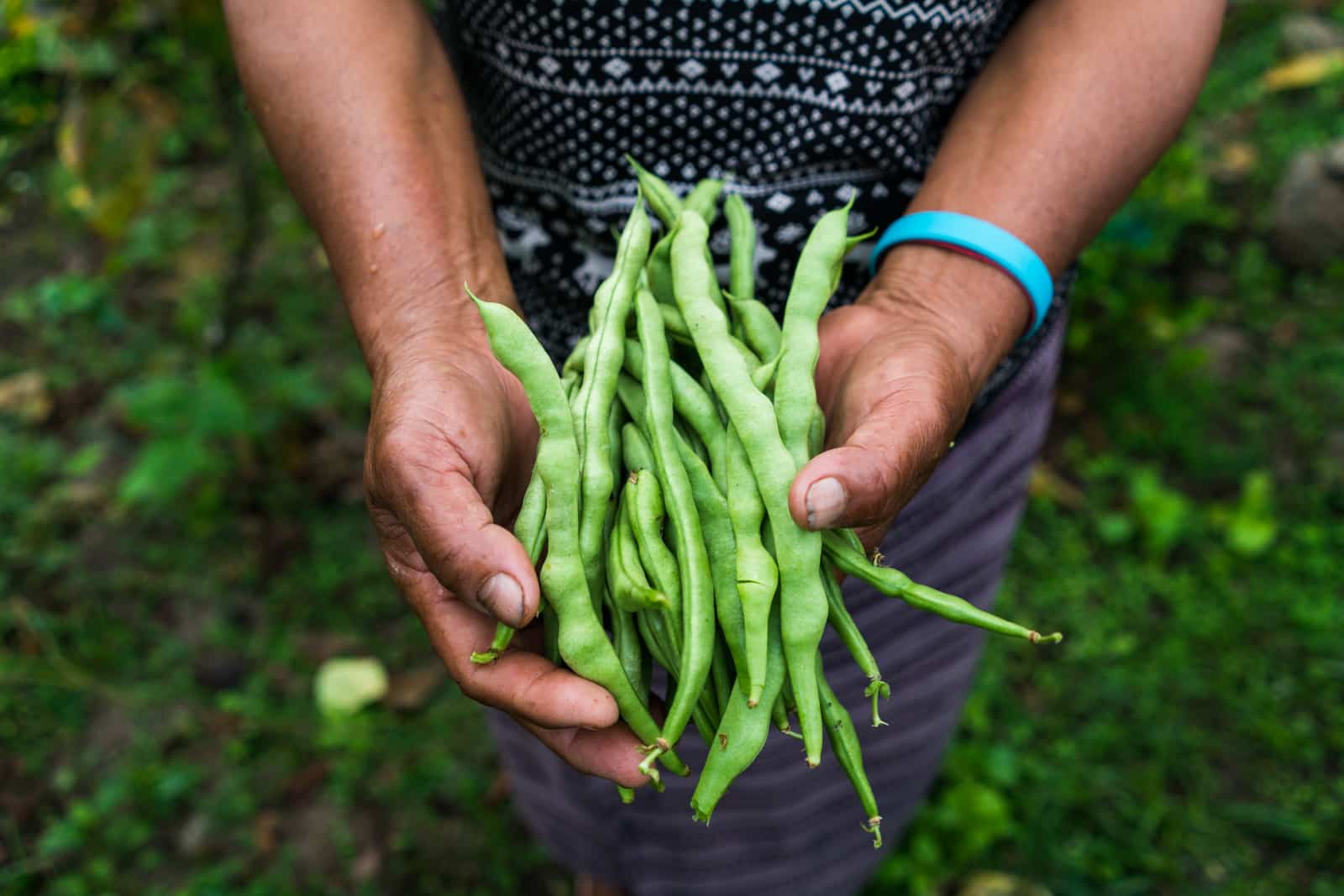
Traveling as a vegetarian or vegan
Surprisingly, despite its pervasive Buddhism, Bhutanese aren’t all vegetarian. Though animal slaughter is forbidden in Bhutan for religious reasons, importing meat is not a problem. India literally does Bhutan’s dirty work; aside from yak, most of the meat in the country is imported from its neighbor. Chicken, beef, pork, yak, and more are common in Bhutanese cuisine.
However, many Bhutanese people are very poor, and cannot afford to eat meat regularly. Meat is something often offered as a luxury to guests. So, vegetarians can relax—vegetarian food is common Bhutan!
Vegans will have more difficulty as cheese and eggs are common in local cuisine. Here’s what vegan traveler Shivya Nath of The Shooting Star has to say about being vegan in Bhutan:
“It’s super easy to be vegetarian, but vegan is a bit more tricky since cheese surprisingly makes it way into a lot of things. Still, I feasted as a vegan. Thimphu was quite easy, and in small villages, most hosts are inclined towards Buddhism and sort of understand the ethical aspect of why someone wouldn’t want to eat animal products. Plus a lot of amazing produce grows in the country (at least in western and central Bhutan) so the food is yum.”
If traveling on a guided tour, your tour company of choice should be able to arrange vegan options for you throughout your trip if informed ahead of time.
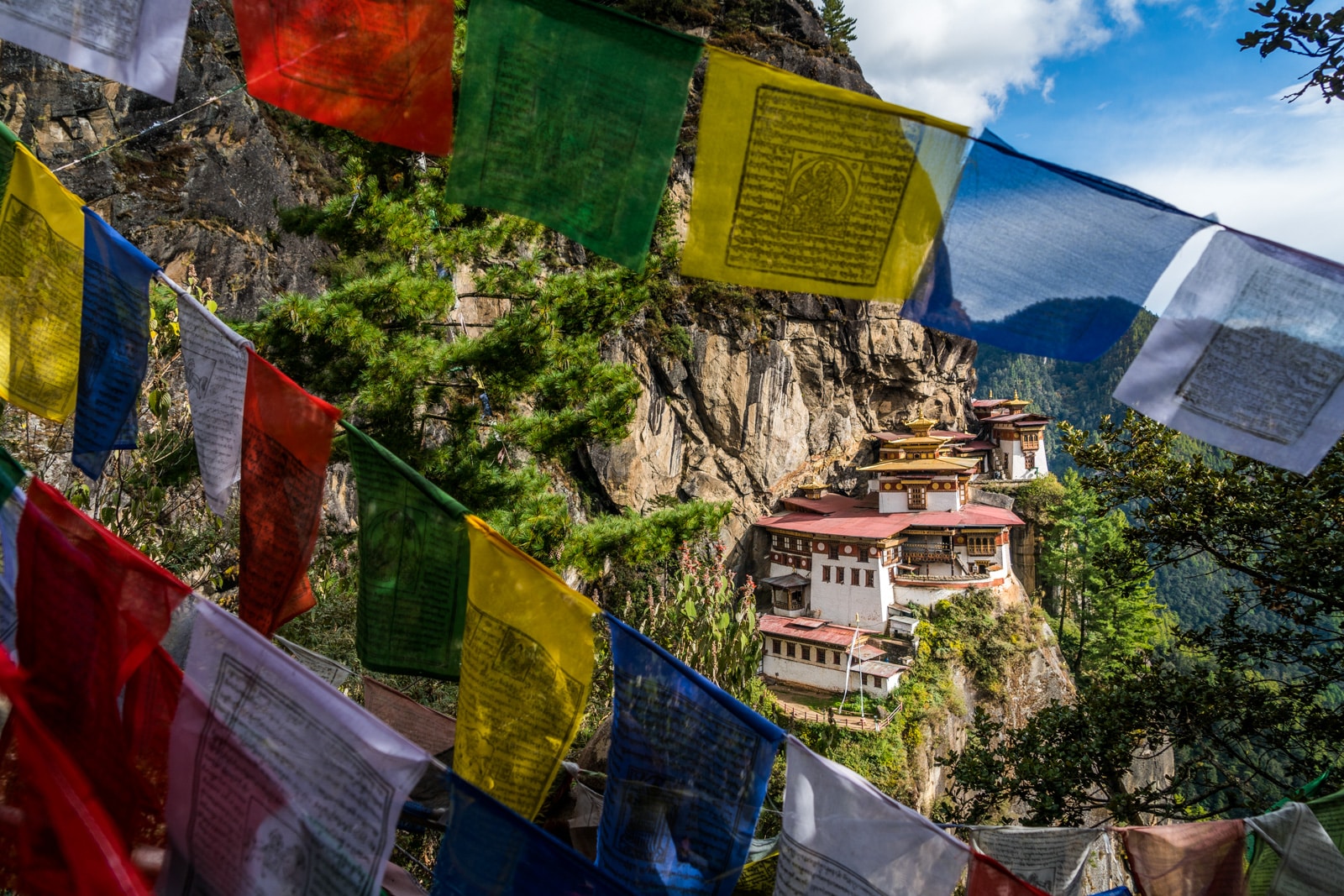
The famous Tiger’s Nest Monastery, one of the main draws to Bhutan
The best time to visit Bhutan
The best time to travel in Bhutan is generally in the months of March, April, May. This is the high season for travel in Bhutan, and popular areas will be at its busiest. The weather is generally pleasant around this time, and valleys will be in full bloom. These months are generally dry, but there might be some pre-monsoon rain in May.
September and October are also good times to visit the country. The air is at its clearest in October, so you’ll be greeted by amazing Himalaya vistas. There might be an odd shower here and there in September, and temperatures will start dropping in October.
June to August is usually considered the low season in Bhutan. June and July can be very wet, so if you want to enjoy Bhutan’s nature it’s best to avoid these months. Prices to go down in the low season (see more on this below).
Money and the cost of travel
Here comes the fun part everyone wants to know about!
Due to its tourism policy, Bhutan is relatively expensive to travel compared to its South Asian neighbors. Foreigners must be on a guided tour that costs $200-250 per day per person, depending on the season. This means visiting is not for everyone—heck, I only made it in because I was on a sponsored trip!
If you can afford to travel to Bhutan, I believe it’s worth it. Here’s my in-depth article about the cost of travel in Bhutan and why I believe it’s worth the money. Check it if you want to learn why Bhutan is so expensive to travel in, what the $250 price tag includes, and why I hard agree with Bhutan’s pricing policy. Yes, even as a broke backpacker.
Note: When I visited in 2017, tourists from India, Bangladesh, and the Maldives were exempt from the minimum daily fee. However, this is changing. From July 2020 on, regional tourists have to pay 1,200 Rs a day (rouhgly $16) to visit Bhutan.
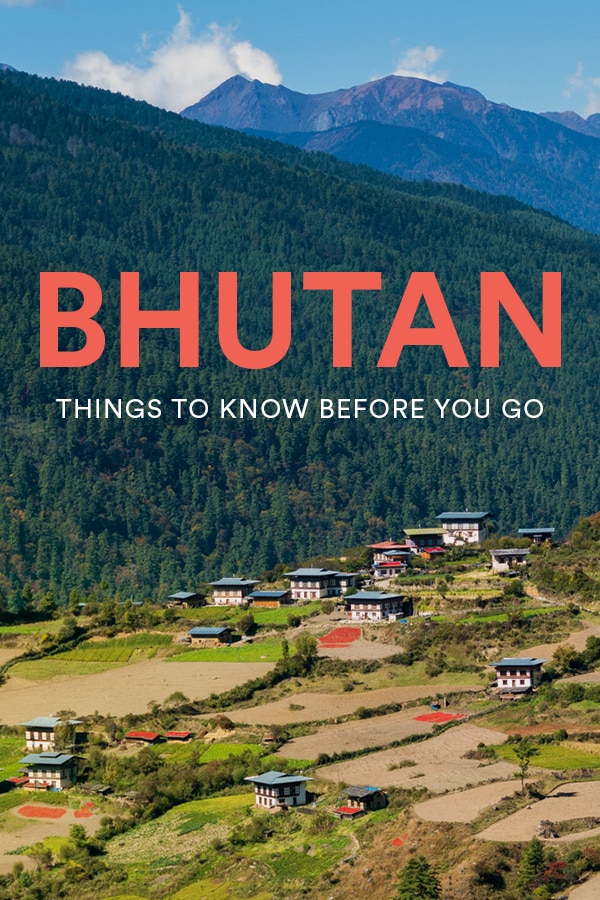
Pin it!
Cash
Bhutanese currency is called ngultrum (Nu). Its value is pegged to the Indian rupee. You can pay with Indian rupees in Bhutan, but 500 and 2000 rupee notes are not accepted. Ideally, you’ll just pay with local money.
ATMs in Bhutan don’t always work. Make sure to bring some US dollars or euros for buying souvenirs, drinks, and tipping your guides and drivers. Tipping is expected on tours in Bhutan, a result of years of West-oriented tourism.
Note: There’s no bargaining culture in Bhutan. No need to haggle.
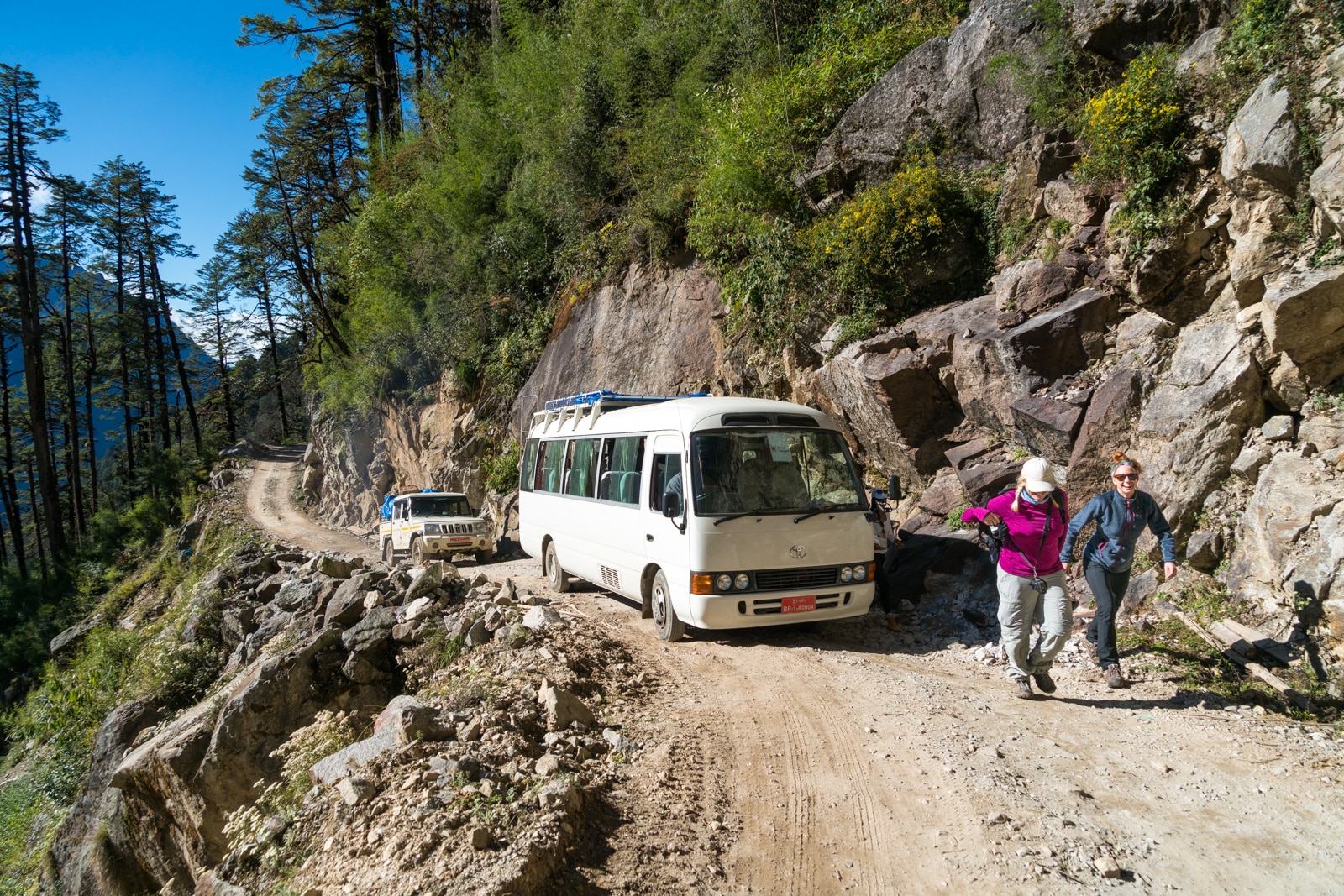
A typical tour bus in Bhutan
Transport
The most common way of entering Bhutan is by flying into Paro airport. Overlanding is becoming increasingly popular for regional tourists, especially Indians. Bikepacking is becoming increasingly popular too.
When I entered Bhutan, I crossed in from India at the little-visited Gelephu border crossing, and flew out from Paro.
Since the majority of people who visit Bhutan do so on a tour, the tour company will arrange all of your transport. Usually, this means buses for groups and cars/jeeps for private tours.
Roads in Bhutan are very hit and miss. A massive road project to pave the main west-east highway is underway, but not all parts of this highway are finished. It’s not uncommon to transition from smooth blacktop to gravel to potholed mess in a matter of 10 minutes.
Once you leave the main highway, most of the roads are in very poor condition. Mountain roads are often bumpy and windy—prepare your bum, and don’t forget to pack motion sickness medicine if necessary.
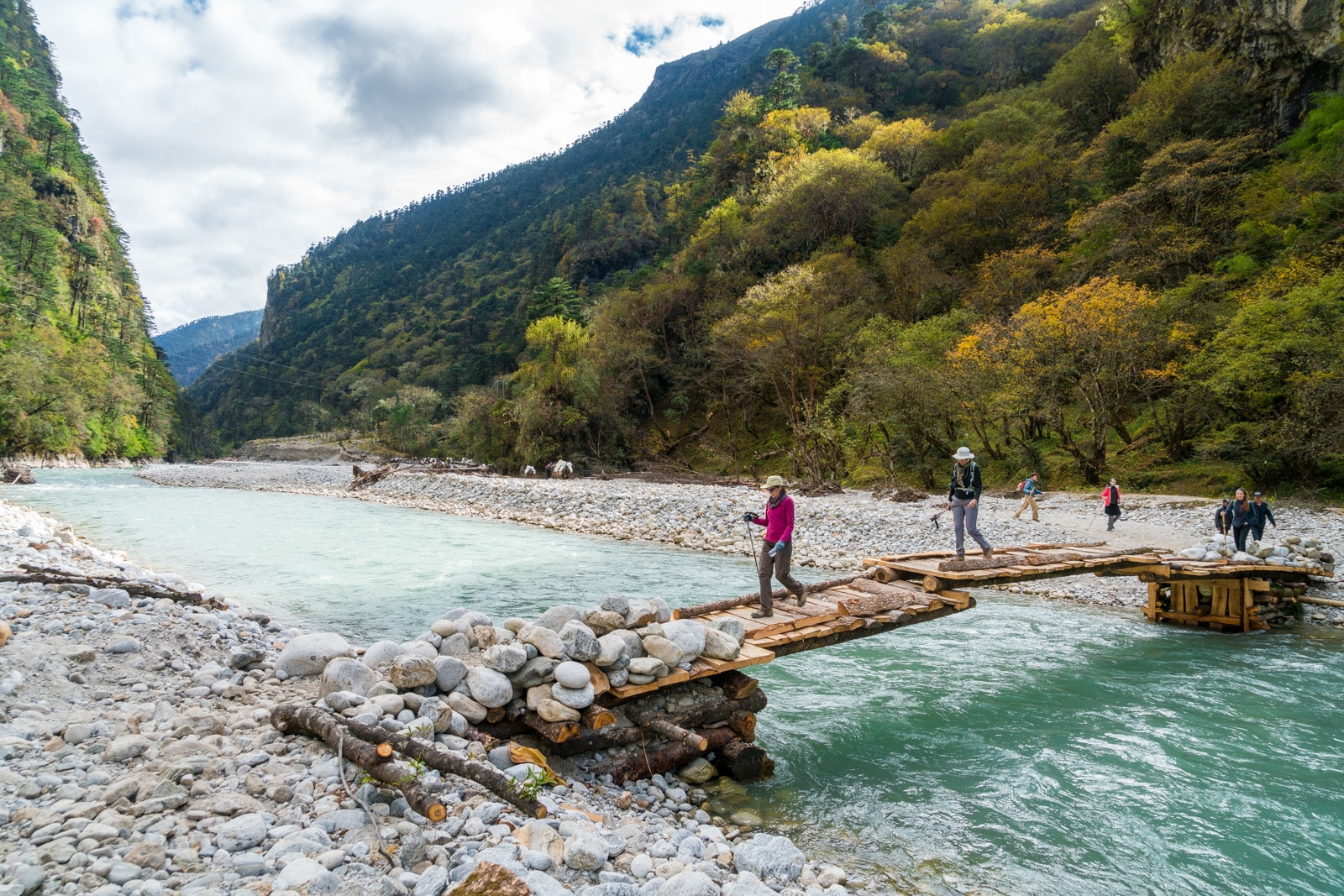
Scenic as it is, trekking in Bhutan is not without risks
Safety
No two ways about it—Bhutan is safe. Crime incidents involving tourists are rare, and the majority of Bhutanese people are honest and friendly. An example: at one point during my trip, I learned I had to send my passport back to the capital for a visa extension. My guide simply gave my passport to the first person who drove past us in the direction of the capital, and asked him to deliver it to an office… and the stranger did!
Safety while trekking
If you go trekking in Bhutan, naturally there’s risk involved. The Himalayas are rugged and unforgiving, you never know when a rogue pack donkey might step on the wrong body part, and the paths are uneven and rarely clearly marked.
If trekking in Bhutan is in the cards, make sure to take standard precautions for trekking in the mountains, and don’t forget to invest in good travel insurance that covers high altitude trekking. I use and recommend World Nomads.
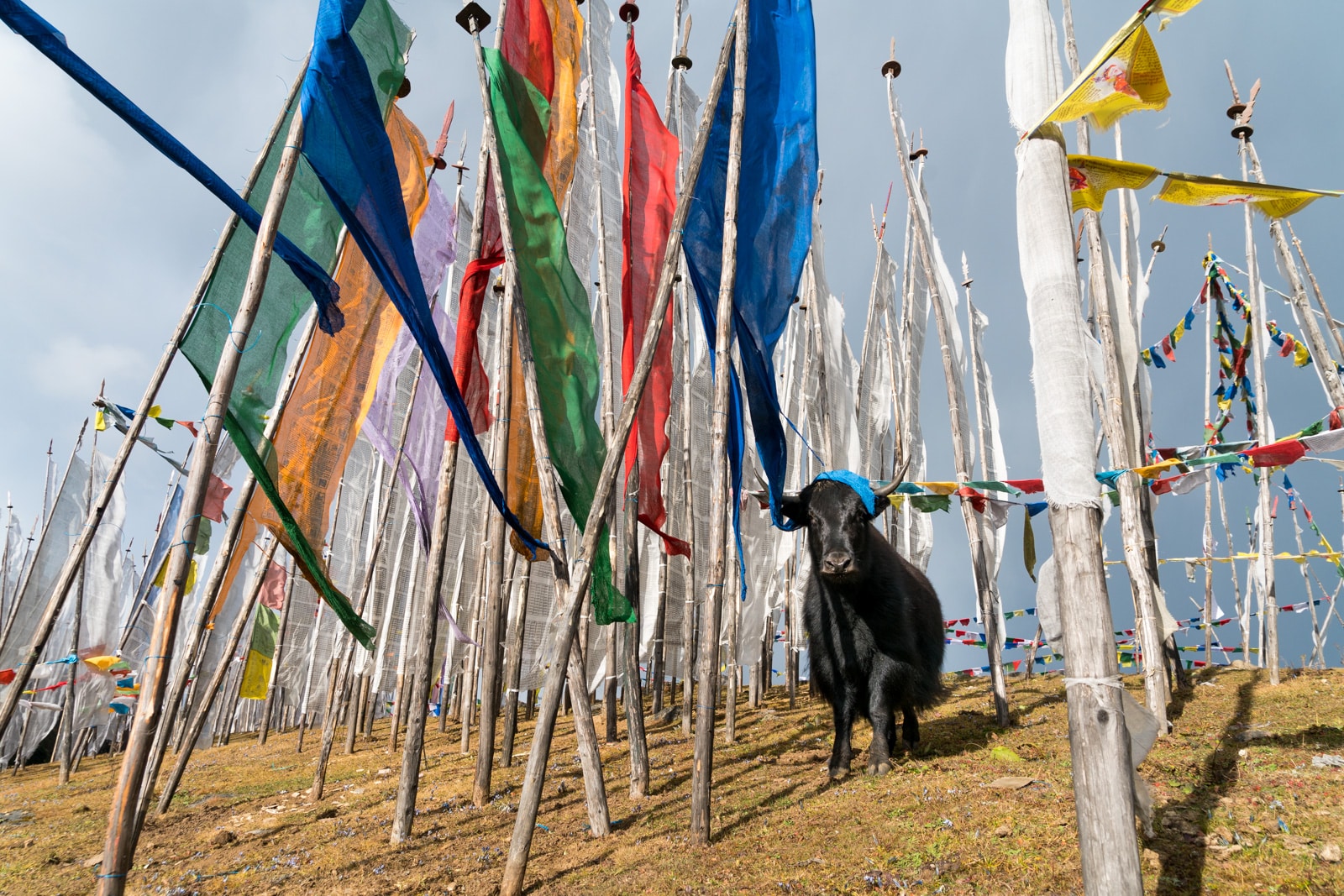
A yak hiding out in the prayer flags on top of Chele La mountain pass
Connectivity and SIM cards
Bhutan’s cities have decent mobile coverage, and most hotels offer free WiFi (whether or not it works is another matter). Connectivity is spotty to nonexistent in the mountains… not that you should ever expect anything more.
Tour operators can arrange local SIM cards for you if desired. The kingdom’s major mobile operator is the state-owned Bhutan Telecom, operating under the B-Mobile brand. The second operator is called TashiCell, which is much smaller. I used B-Mobile during my three weeks in the country, and I was satisfied with my coverage.
If you travel to Bhutan independently you can buy a SIM card with data at one of the many branded mobile stores for about 100 Nu. Bring copies of your passport.
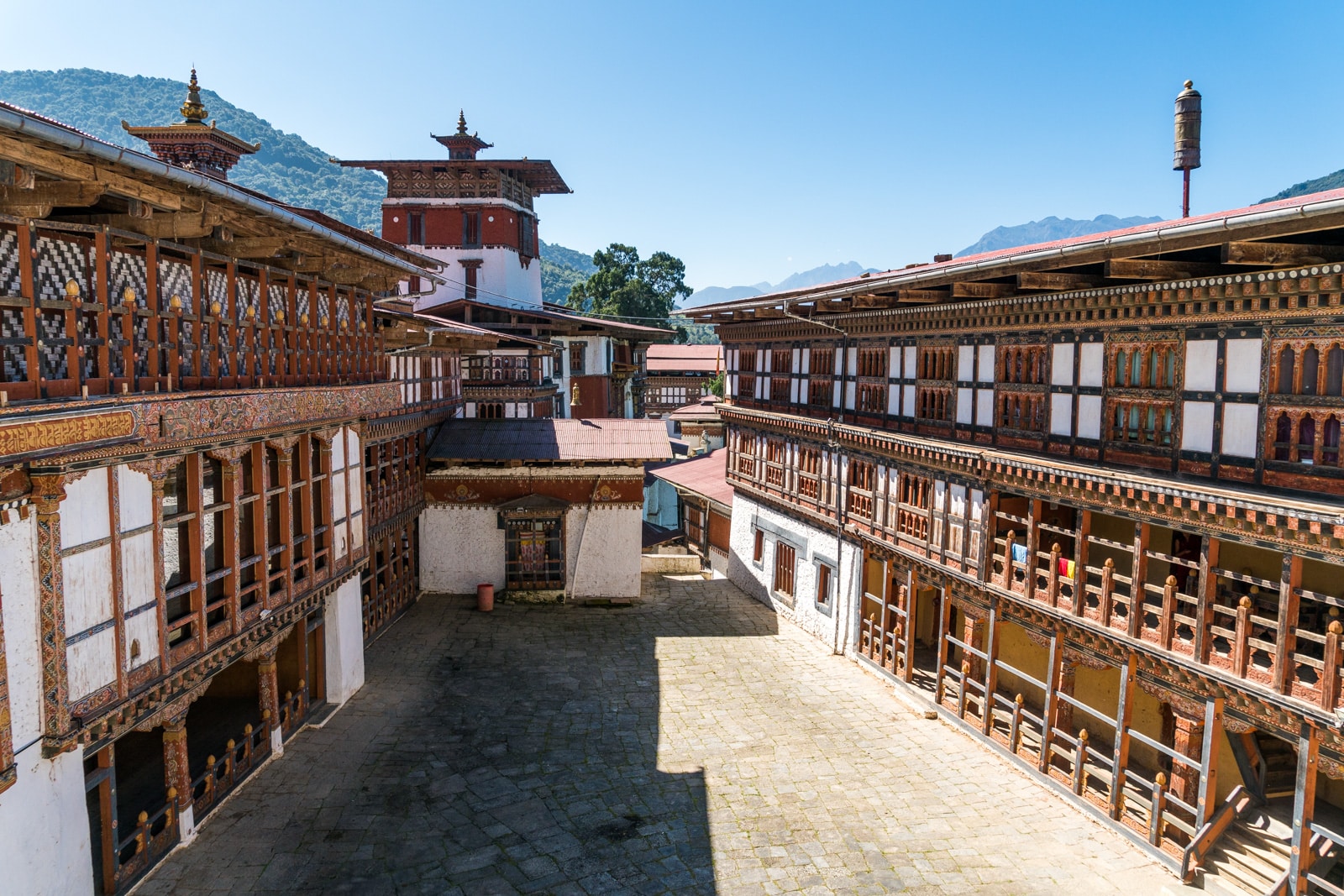
The elaborate interior of the Trongsa dzong fortress
Other things to know before going to Bhutan
One last round of tips and then you’re free, I swear! Here are a few more things about going to Bhutan that tourists might want to know:
- Drones are not allowed into Bhutan. Your bags will be scanned if flying into the country.
- You cannot buy tobacco products in Bhutan… legally, anyway. You can bring your own cigarettes (up to one standard carton), but there’s a 200% import tax on any cigarettes brought into the country. They’ll ask you if and when you declare your cigarettes upon entering the country. If you’re really desperate, some shops secretly sell cigarettes under the counter; your guide might be able to help you if they’re chill.
- Avoid drinking unfiltered tap water in Bhutan. To minimize your plastic waste, I recommend packing a SteriPen UV sterilizer (what I use) or LifeStraw water bottle so you don’t have to rely on bottled water.
More posts on Bhutan
- Is Bhutan really worth $250 per day?
- The best thing about traveling in Bhutan was…
- 50 breathtaking photos of Bhutan
- Living it up in Laya at the Royal Highlander festival
- Tiny towns where smiles abound: off the beaten track in Bhutan
Have more questions about traveling Bhutan? Ask them in the comments!
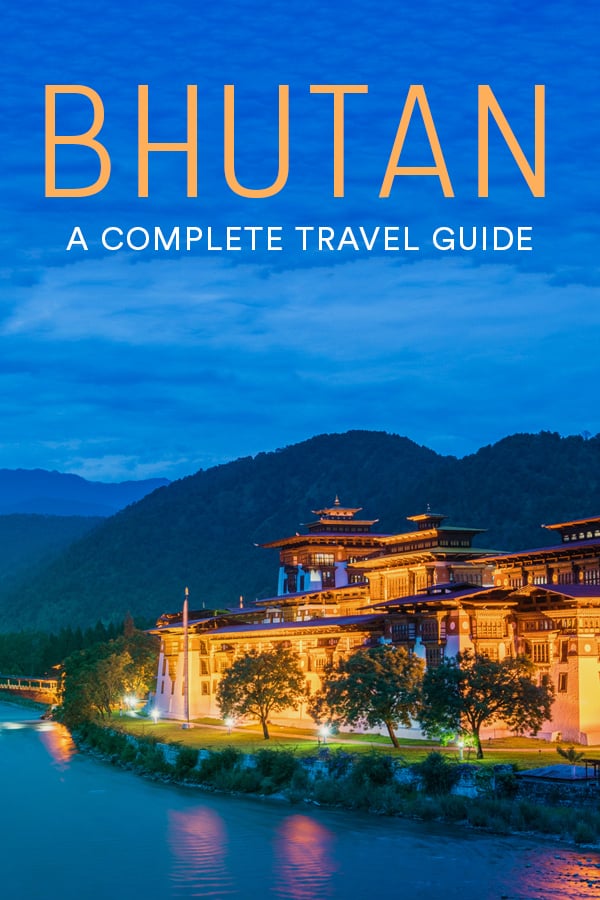
Was this helpful? Pin it!
Yay transparency! There are affiliate links in this post. If you buy or book something using my links, I’ll make a bit of extra cash at no extra cost to you. Never fear, I’d never recommend something I wouldn’t use myself!
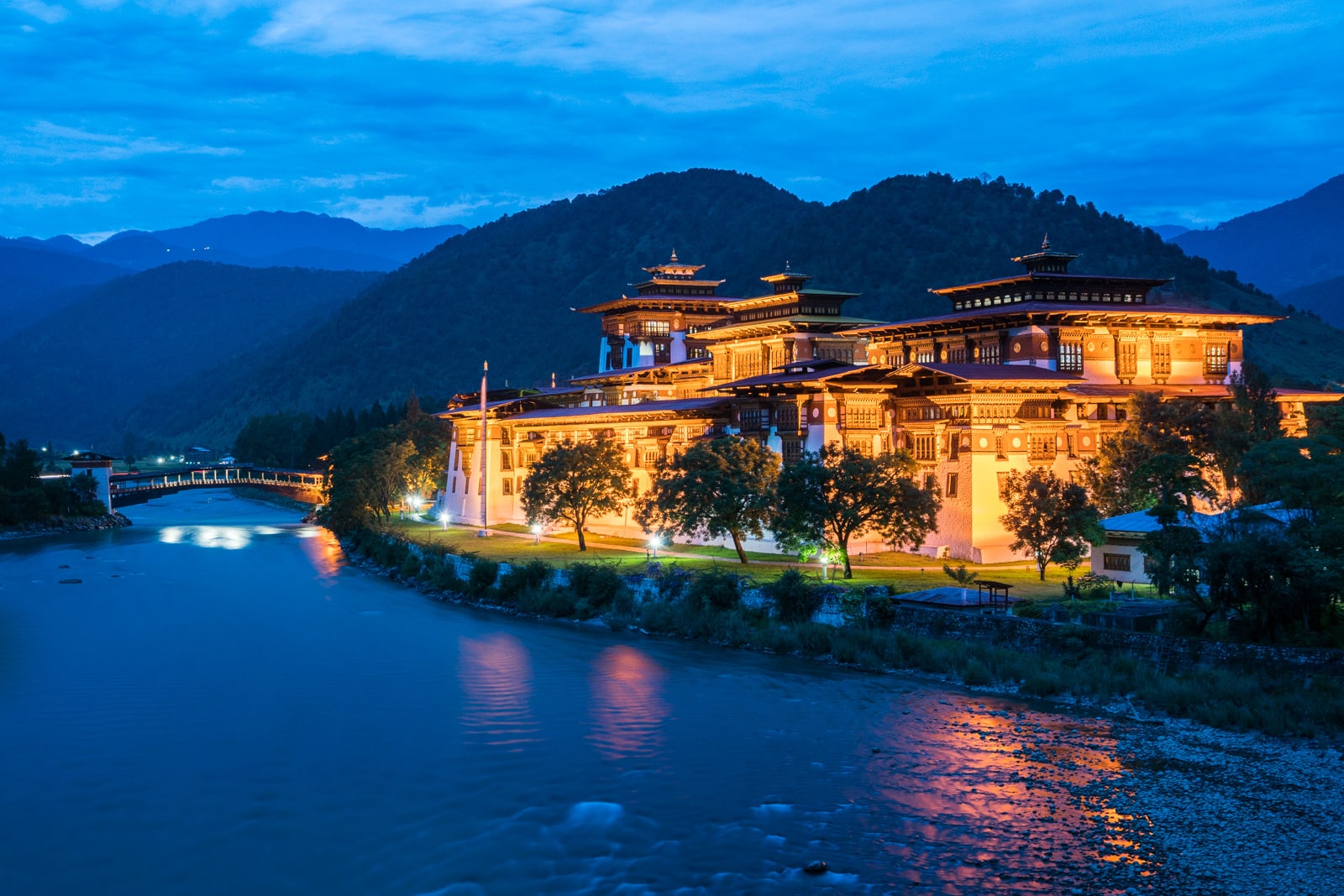


Please send details Butan Trip from Pune to Butan Minimum rate, temperature, When rate down that time I want temperature.
Wow! Great Contet!
hai Alex . how are you ? is it true that a woman in bhutan can marry tow hasbands ?